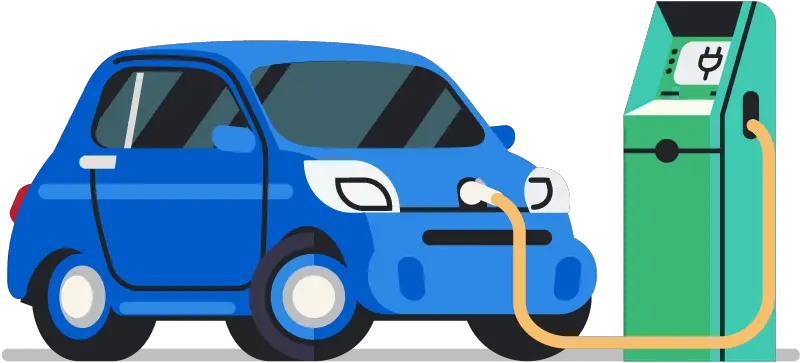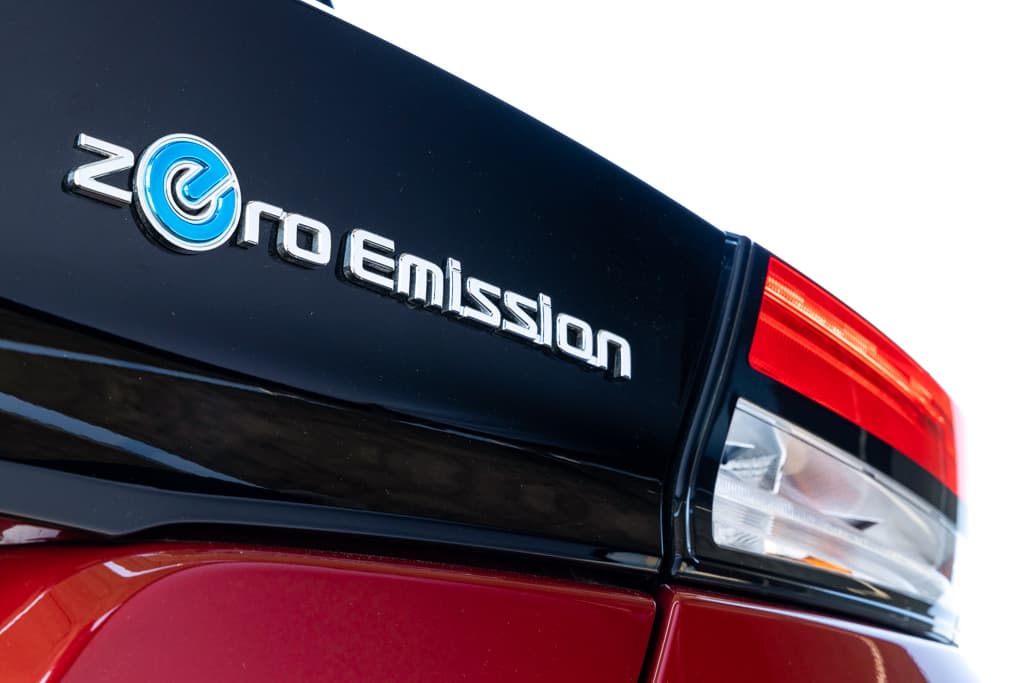All your questions about electric vehicles, answered.
Day in day out, there are questions about electric cars that are being asked. We will try to sample a few of them and answer as broad as possible.


Day in day out, there are questions about electric cars that are being asked. We will try to sample a few of them and answer as broad as possible.
Which Models and Types Are Available?
Electric vehicles come in all shapes and sizes, from small hatchbacks to luxury SUVs. Some are electric versions of familiar models; others are all-new vehicles engineered to fully use electricity.
There are two basic kinds of plug-ins: battery electric vehicles (BEVs) that run exclusively on electricity, and plug-in hybrid electric vehicles (PHEVs) that can run on electricity for a limited distance before switching to an electric model.
Here is a list of some of the EVs as of 2020.
a) Hatchback
- BMW i3 (BEV)
- Chevrolet Bolt (BEV)
- Hyundai Ioniq (BEV)
- Mini Cooper SE (BEV)
- Nissan Leaf (BEV)
b) Sedan
- Honda Clarity (BEV)
- Tesla Model 3 (BEV)
c) Luxury
- BMW 3 Series
- Lucid Air (BEV)
- Polestar 2 (BEV)
- Porsche Taycan (BEV)
- Tesla Model S (BEV)
d) SUV/Minivan
- Audi E-Tron, Q4 E-Tron, and E-Tron GT (BEV)
- Ford Mustang Mach-E (BEV)
- Hyundai Kona Electric (BEV)
- Hyundai Nexo (FCEV)
- Kia Niro Electric (BEV, PHEV)
- Jaguar I-Pace (BEV)
- Mercedes-Benz EQC (BEV)
- Rivian R1S (BEV)
- Tesla Model X and Model Y (BEV)
- Volkswagen ID.4 (BEV)
e) Pickup Truck
- Rivian R1T (BEV)
How are EV zero-emission, If I plug my car into a charging station that's powered by coal?
Electric vehicles can be charged using public superfast chargers but they can also be plugged into any PowerPoint and use power from the electricity grid -,although this is a much slower way to charge.
Charging from the grid does indeed cause emissions, but it is still a much cleaner option than petrol and diesel cars.
Traditional cars produce emissions both from the tailpipe while driving, as well as the emissions that come from the production and distribution of fuel.
Dr. Jake Whitehead is an e-mobility research fellow at the University of Queensland and told Hack that electric vehicles use about 30 percent fewer emissions being charged on the grid. In a place like Tasmania, where most of the electricity comes from hydro energy, electric vehicles are 88 percent more efficient.
More renewables are coming into the system every day, so electric vehicle emissions will keep dropping as the electricity grid gets cleaner.
But not everyone relies on the grid. For example, in Australia, there is a high rate of rooftop solar in the world, and a recent survey found that majority of EV owners have solar so that they can plug in when the sun is shining and use zero-emission to run their car.
It’s estimated there are more than 1,800 premature deaths in Australia annually due to pollution from petrol and diesel vehicles, and because electric vehicles produce no tailpipe emissions they will also make our air cleaner.
Can I own an EV in a country with few public charging stations?
Concerns are being raised on range anxiety if you get stuck while on the road, hence becoming a barrier to many people switching to an electric vehicle.
Current EVs have an average battery range of 480 kilometers, with a long-range Tesla for example being able to run for 628 kilometers, and the technology is still improving.
The CEO of the Electric Vehicles Council Behyad Jafari says electric vehicle owners usually use their cars differently than petrol cars because they can be charged at home or work, as long as there’s access to a PowerPoint. Most EV drivers top-up their batteries by plugging in each night at home.
Jafari says that rather than thinking about ‘where do I go to charge’ if you have somewhere to park your car at home, that’s where you'll be charging it. So it's easier to think about this as leaving the house with a full tank of petrol every morning. To charge an EV takes an hour every night.
The vast majority of the charging will be done at home or work, public chargers are only for around 5-10 percent of the charging sessions.
For longer distances, that’s where the super-fast chargers come in and why governments have been focused on improving infrastructure so EV drivers can recharge on road trips the same as refilling a car.
A superfast charger can add 270 kilometers in half an hour, which is considerably longer than up a car tank and in 2021 you can’t guarantee every small town will have a charger so you have to plan.
How Far Can They Go?
Most all-electric cars can now go more than 200 miles on a full charge, much less than the typical 400- to 500-mile range for gasoline cars. We found that the Environmental Protection Agency-rated range is quite accurate for EVs, though hilly terrain and running the air conditioning in hotter weather can also exact a toll. And driving in cold weather will shorten the range noticeably because of the power required to heat the cabin.
Driving an EV requires planning. But plug-in hybrids have a combined gasoline and electric range of 400 to 550 miles, and if you plan it right, you may never have to go to a gas station, except for during long trips.
What about EVs for trades?
According to the Electric Vehicle Council, there are 15 fully electric car models currently available in Australia, and 22 more models expected by the end of 2022. The range of uses is limited but that’s expected to change in coming years as more car manufacturers increase their offerings.
Mercedes, Nissan, Renault, and Volkswagen are some of the car companies with electric vans on the market, although not all in Australia.
When it comes to Utes, the most-hyped electric vehicle in years was unveiled recently in the United States by US President Joe Biden.
The Ford F-150 is the quintessential American pickup truck and their most popular car and now comes in an electric model with a 370km range and a battery that can be used to run an average American house for three days.
What about the pressure on the electricity grid?
This issue swings both ways. Electric cars can potentially cause a drain on the grid if their uptake isn’t managed, but the flip side is they can also be used as batteries to stabilize the grid.
Not all-electric cars have vehicle-to-grid batteries yet but there are currently two models in Australia that can be used as a battery. For example, the Ford F-150 Lightning can run home for three days if there's a blackout.
Charging EVs during the day when there are heaps of solar energy being produced or when the wind is blowing can also help keep the pressure off the grid and maximize renewable energy use. In the future, you could drive to work, soak up your work's free solar energy, then come home and run your house off that energy for the night.
Aren’t the batteries bad for the environment?
The production of batteries for electric vehicles comes with both environmental and human rights challenges.
Minerals like cobalt, lithium, and nickel are used in EV batteries. There's a huge demand for these resources, but there are also issues around the industry’s record in some of the countries they're mined in, including a child and worker exploitation, land rights issues, and pollution, to name a few.
It’s important to compare apples with apples though, and weigh up these very real challenges against those of the oil industry that fuels traditional cars, and also climate change.
How Long Does It Take to Charge One?
Charge times vary greatly, depending on the size of the battery, how fast the car can take to charge, and the amperage of the circuit. For most EV owners, charging overnight at home is the cheapest and most convenient option. Unless you are pushing the range limit daily, you won’t have to fill it up from empty all the way to full very often.
On a typical 240-volt, 32-amp (Level 2) charger, it takes between 9 and 13 hours to fully charge an EV that can go more than 200 miles. Plug-in hybrids, with their smaller batteries, take significantly less time to recharge. For instance, it takes about 2 hours to replenish the Toyota Prius Prime.
Expect about triple those times when charging from a standard 120-volt (Level 1) household outlet. Alternatively, expect to get about 4 miles of driving for every hour of charging.
A wider variety of 240-volt chargers are coming on the market that charge at different speeds, with charge times that vary depending on the car and charger. Some systems, such as Tesla’s High Power Wall Connector home charger, replenish the battery much quicker with Long Range Tesla versions.
Publicly accessible DC fast chargers are spreading throughout the country. These can replenish up to 50 percent of the battery’s range in 30 to 45 minutes. Tesla’s Superchargers are even quicker, with speed determined by the model. The most common V2 superchargers can restore 50 percent of the battery capacity in 30 minutes for the Long Range versions of the Model 3, S, and X.
Source:
i) Jo Lauder (2021) All your questions about electric vehicles, answered
ii) Consumer reports (2020) What you need to know to decide whether going electric is right for you




